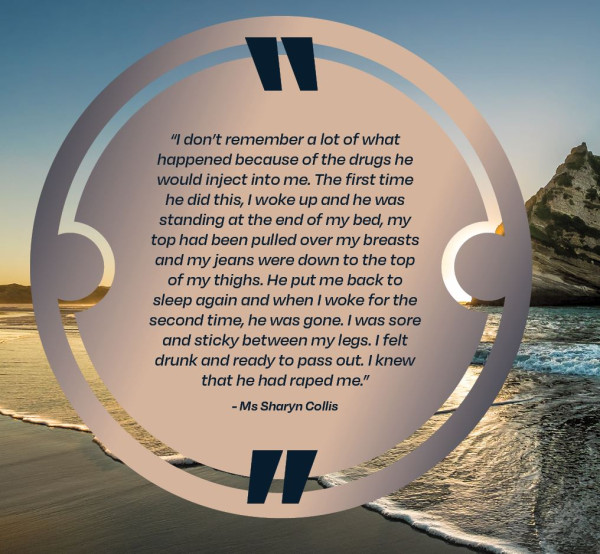Summary of findings Ngā tūtohitanga
Te whai akoranga i te mahi tūkino: te haepapatanga me te puretumu - Attempts to learn lessons from abuse: accountability and redress
The Inquiry finds:
- Inquiries by the Ombudsman and a commission of inquiry in the late 1970s had limited scope and duration, and inadequate access to information.
- The first New Zealand Police investigation, in 1977, was flawed.
- The investigating officer reached a conclusion before obtaining key evidence.
- The scope of the investigation was narrow and important witnesses were not interviewed, including most of the patients at the unit.
- NZ Police did not recognise the deficiencies in the expert opinion they obtained.
- The investigations and actions by medical professional bodies in 1977 were flawed.
- The Medical Association prioritised fairness to Dr Leeks over the safety and wellbeing of patients.
- The Medical Association and the Medical Council accepted much of Dr Leeks’ response to allegations without question.
- The New Zealand branch of the Australian and New Zealand College of Psychiatrists learned of Dr Leeks’ conduct in the late 1970s but did not confront Dr Leeks or forcefully advocate for change.
- The Crown’s response to civil claims by survivors in the 1990s and 2000s was flawed.
- The information available to the Ministry of Health and Crown Law from the early stages showed the claims were meritorious, but officials were more focused on defending liability than acknowledging the merits of the claims.
- In the late 1990s, Ministers decided to defend the claims in court, despite the merits, to establish the parameters of Crown liability.
- A newly elected Government directed officials to settle the Lake Alice claims in 2000, but officials continued to place obstacles in the way of settlement, requiring a further direction to settle from the Prime Minister.
- Even after proceeding with settlement, the Crown treated survivors unfairly and wrongly deducted amounts from the payments to survivors.
- The legal process had many other flaws.
- The legal process was slow, made worse by inexcusable delays on the part of the Crown.
- The legal system placed many legal and practical barriers in the way of survivors, which put them at a disadvantage.
- Crown lawyers exploited every legal advantage to try to defeat the claimants, with an adversarial mindset, despite the merits of the claims.
- Many officials and others in power had a resistant attitude to the claims and the claimants and their legal representatives.
- The settlements did not acknowledge physical and sexual abuse.
- The settlements were ‘without prejudice’; that is, with no admission of wrongdoing.
- The process did not lead to criminal or professional disciplinary accountability.
- Human rights breaches were not recognised nor was the State’s obligation to carry out a prompt and impartial investigation into the allegations of torture.
- No effort was made to engage with Māori survivors in a way that recognised their culture and tikanga Māori.
- No effort was made to recognise Pacific peoples’ cultures and languages.
- No effort was made to recognise the needs of disabled people.
- The Medical Council declined to carry out a fresh investigation into Dr Leeks’ conduct in 2000, wrongly believing earlier investigations had adequately addressed the issues.
- The Royal Australian and New Zealand College of Psychiatrists had the power to censure, suspend and expel members, but it had no powers to investigate or require the production of information or evidence in relation to misconduct of psychiatrists.
- The Accident Compensation Corporation failed to refer evidence of medical misadventure by Dr Leeks to the Medical Council for investigation as it was required to do – a serious oversight.
- Despite a request to do so, the Crown did not provide the Children’s Commissioner with material it held about former Lake Alice staff in 2002 and the Commissioner took no further action.
- In 2005, the Health and Disability Commissioner took no further action on a Lake Alice complaint believing little would be gained by another investigation. The office of the Health and Disability Commissioner should have disclosed a potential perceived conflict of interest to the complainant, even though the outcome complied with internal processes.
- The second New Zealand Police investigation, from 2003 to 2006, was flawed.
- The officer in charge did not think an investigation was warranted and was not aware of the previous investigation file.
- NZ Police did not give the investigation priority or adequate resources and did not actively progress the investigation for four years (2003 to 2006).
- NZ Police obtained advice from Crown Law based on just one complainant’s evidence, despite having 33 other statements.
- NZ Police did not follow Crown Law’s advice to carry out further investigation into the use of electric shocks and paraldehyde as punishment.
- NZ Police did not properly manage the file, losing key evidence.
- NZ Police did not carry out basic investigative steps such as interviewing complainants or staff, seeking records or interviewing potential defendants.
- The officer in charge formed an adverse view about the credibility of complainants without interviewing them or investigating their complaints.
- The third New Zealand Police investigation, in 2006 to 2010, was flawed.
- NZ Police did not afford adequate priority or resources to the investigation.
- NZ Police did not designate it a ‘specialist investigation’, which would have ensured specialist staff and greater resources were allocated to it.
- NZ Police reduced the investigation’s scope to the misuse of the machine used to deliver electric shocks, overlooking physical and sexual abuse and the punitive use of paraldehyde.
- NZ Police did not interview relevant complainants or investigate serious sexual allegations.
- NZ Police focused on Dr Leeks, overlooking other staff.
- NZ Police obtained legal opinions based on an incomplete and inaccurate summary of the file.
- NZ Police adopted a biased attitude against those who had been admitted to the unit, treating them as unreliable and troublesome. NZ Police assumed staff were well-meaning and dedicated professionals.
- The Crown Law Office did not consider Aotearoa New Zealand’s obligations under the Convention against Torture when dealing with the Lake Alice claims in the 1990s and 2000s. The United Nations Committee against Torture found Aotearoa New Zealand in breach of the convention for failing to ensure a prompt and impartial investigation into the unit.


